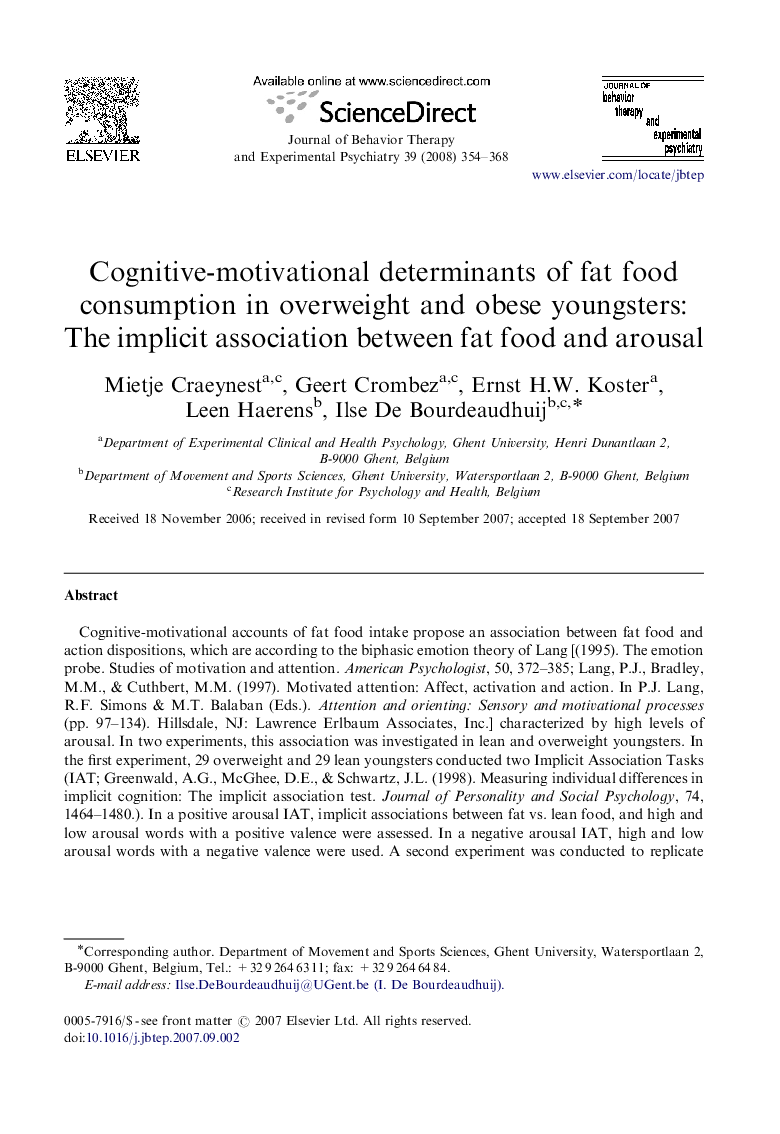| Article ID | Journal | Published Year | Pages | File Type |
|---|---|---|---|---|
| 910610 | Journal of Behavior Therapy and Experimental Psychiatry | 2008 | 15 Pages |
Cognitive-motivational accounts of fat food intake propose an association between fat food and action dispositions, which are according to the biphasic emotion theory of Lang [(1995). The emotion probe. Studies of motivation and attention. American Psychologist, 50, 372–385; Lang, P.J., Bradley, M.M., & Cuthbert, M.M. (1997). Motivated attention: Affect, activation and action. In P.J. Lang, R.F. Simons & M.T. Balaban (Eds.). Attention and orienting: Sensory and motivational processes (pp. 97–134). Hillsdale, NJ: Lawrence Erlbaum Associates, Inc.] characterized by high levels of arousal. In two experiments, this association was investigated in lean and overweight youngsters. In the first experiment, 29 overweight and 29 lean youngsters conducted two Implicit Association Tasks (IAT; Greenwald, A.G., McGhee, D.E., & Schwartz, J.L. (1998). Measuring individual differences in implicit cognition: The implicit association test. Journal of Personality and Social Psychology, 74, 1464–1480.). In a positive arousal IAT, implicit associations between fat vs. lean food, and high and low arousal words with a positive valence were assessed. In a negative arousal IAT, high and low arousal words with a negative valence were used. A second experiment was conducted to replicate Experiment 1 in 29 youngsters with severe obesity and 29 lean peers. The results revealed strong implicit associations between fat food and arousal in both the overweight and the control group. No differences were found between the groups, nor between the positive and the negative arousal task. These results are related to cognitive-motivational theories of fat food intake.
